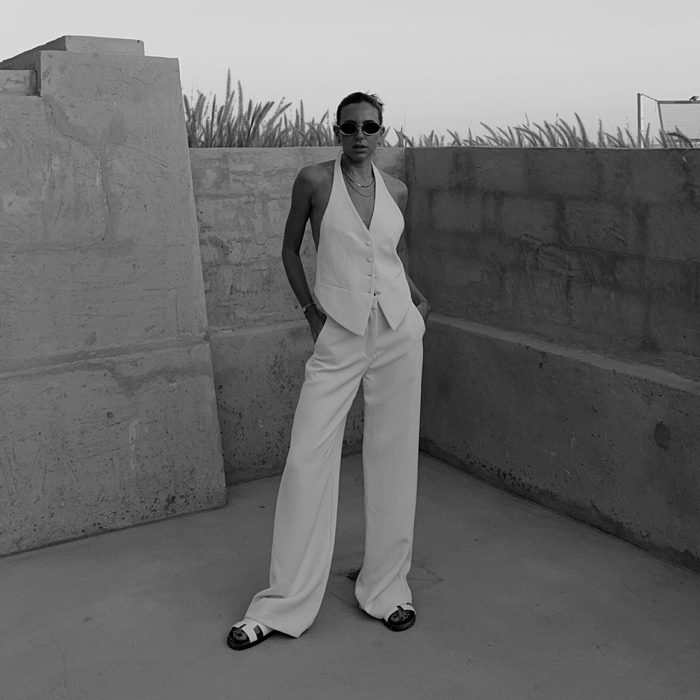From the four major fashion week events to the order of fashion weeks, fashion week dates, the biggest fashion week, how to attend fashion week, fashion week schedules, and more helpful information. Cover image: courtesy of Carven
Also, read: FASHION WEEK SCHEDULE 2024: THE ULTIMATE GUIDE TO THE RUNWAY
A BRIEF HISTORY OF FASHION WEEK
Fashion Week (FW) is a biannual event showcasing top designers’ latest trends and collections worldwide. The concept of it began in the early 20th century. The first official Fashion Week was held in New York in 1943. This event, known as “Press Week,” was organized by fashion publicist Eleanor Lambert to divert attention from French fashion during World War II and promote American designers instead.
The success of Press Week laid the foundation for what would become New York Fashion Week, inspiring other cities to follow suit. Paris, known for its haute couture, had been organizing fashion shows since the 19th century, but it wasn’t until after World War II that Paris Fashion Week (PFW) took on its modern form. London and Milan soon joined the ranks soon after.
HOW DO FASHION WEEKS WORK?
Fashion Weeks are organized twice yearly in major fashion capitals: once in February to showcase autumn/winter collections and again in September for spring/summer collections of the upcoming year. Each week runs for about a week and features runway shows, presentations, and events.
Designers and brands apply to participate in FW through the fashion councils of each city. Once accepted, they are given a time slot and venue to present their collections. These shows are attended by fashion editors, buyers, celebrities, and influencers, all of whom play a crucial role in shaping public perception and commercial success.
WHAT ARE THE “BIG 4” FASHION WEEKS?
The “Big 4” Fashion Weeks refer to the world’s most prominent and influential Fashion Weeks: New York, London, Milan, and Paris. Each city has its distinct style and contribution to the fashion industry.
NEW YORK FASHION WEEK
New York Fashion Week (NYFW) is known for its commercial and street-style approach. It often features established American designers like Ralph Lauren and Marc Jacobs alongside emerging talents. NYFW is characterized by its diverse and inclusive runway shows, which reflect the melting pot of cultures that define the city.
LONDON FASHION WEEK
London Fashion Week (LFW) is celebrated for its avant-garde and experimental fashion. It is a platform for both legendary designers like Burberry and innovative newcomers. London is famous for pushing the boundaries of fashion, often presenting bold and unconventional collections.
MILAN FASHION WEEK
Milan Fashion Week (MFW) is synonymous with luxury and craftsmanship. Italian designers like Gucci, Prada, and Versace dominate the Milan runways with their trend-predicting collections.
PARIS FASHION WEEK
Paris Fashion Week (PFW) is the grand finale of Fashion Month. As the birthplace of haute couture, Paris sets the bar for luxury and high fashion. Iconic fashion houses like Chanel, Dior, and Louis Vuitton present their collections here. Newcomers include Stella McCartney and Victoria Beckham.
ORDER OF FASHION WEEKS
The Fashion Week calendar follows a specific order, starting in New York and ending in Paris. The sequence is as follows:
- New York Fashion Week: Usually held in early February and September.
- London Fashion Week: Takes place right after New York, typically in mid-February and September.
- Milan Fashion Week: Follows London, occurring in late February and September.
- Paris Fashion Week: Concludes the Fashion Week circuit in late February/early March and late September/early October.
This order allows designers, models, and industry professionals to travel from city to city, ensuring they can participate in multiple weeks without scheduling conflicts.
FASHION WEEK SCHEDULES AND DATES
Every FW is scheduled biannually to showcase the upcoming season’s collections. The main events are:
- Autumn/Winter Collections: These are presented in February and early March. The schedule typically starts with New York in early February, then London and Milan, and ends with Paris in early March.
- Spring/Summer Collections: These collections are shown in September and early October. New York starts the season in early September, followed by London and Milan, and concludes with Paris in early October.
In addition to these main weeks, Resort and Pre-Fall collections are presented at different times throughout the year, usually in May/June and November/December, respectively. Besides these big cities, more fashion capitals emerge. Copenhagen is a frontrunner when it comes to sustainability, Berlin is great for spotting upcoming design talent.
Also, read: FASHION WEEK SCHEDULE 2025: A COMPLETE GUIDE TO THE RUNWAY
CAN ANYONE GO TO FASHION WEEK?
FW is primarily an industry event, and access is generally restricted to fashion professionals, including designers, buyers, editors, photographers, celebrities, and influencers. The designers and fashion houses hosting the shows send out invitations.
However, there are opportunities for the general public to get involved. Some weeks, like those in New York and London, started offering tickets to select shows and events. Additionally, many shows are live-streamed online since the pandemic. And for those who attend, it’s essential to plan well. Networking within the fashion industry can help secure invitations, and there are also contests and giveaways on social media that offer tickets to the public.
Keep an eye on our Instagram for updates.










